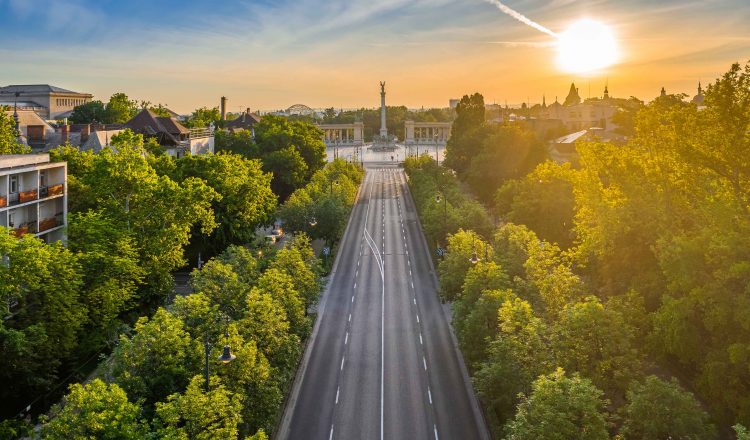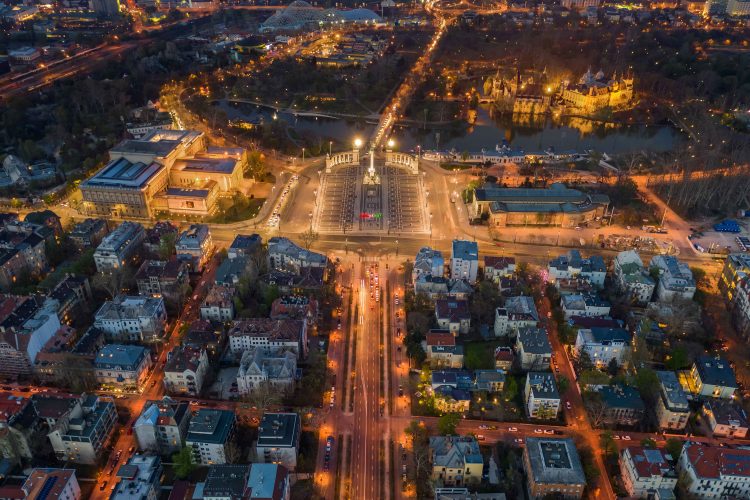
The fabulous road of Budapest: the Andrássy Avenue

There is an amazing, old-fashioned, elegant road in Budapest, the famous Andrássy Avenue, as locals –with some exaggeration- love to call it, the Hungarian Champs Elysées. This emblematic boulevard is lined with spectacular Neo renaissance and art nouveau mansions and townhouses, not to mention the historical building of the State Opera House, thus no wonder that this historic and cultural gem was recognised as a World Heritage Site in 2002, along with Heroes’ square and the Millennium Underground running right below the Avenue. Nowadays, it is extremely chic, full of exclusive boutiques, fine cafes, restaurants, theatres, Embassies, Hotels.
The idea of the Avenue was figured out at the late 19th century by Count Gyula Andrássy, Prime Minister, and just 6 years after acceptance of the construction plan the avenue was inaugurated right on the national holiday of 20th August, the commemorating day of St. Stephen, the founder and first king of Hungary.
The road, its buildings and squares witnessed both the joys and the shocking events of the 20th century. During the storms of history and the communist era it was renamed several times, and got back its original name in 1990 after the regime change. A nice 30 minutes’ walk along the 2 km road from the city centre to the City Park is a stroll through the history of Hungary. No coincidence that the Eucharistic Procession will path along this Avenue as well.
The Avenue is inseparable from the Millennium Underground, the Metro line No.1. nicknamed “small underground” by the locals. It was put into service in 1896 as the first underground of the European continent. Train cars and stations seem little changed from the 19th century, even though a few decades ago it underwent an extension and reconstruction, fortunately preserving and maintaining the line’s historic charm. A ride on it is a must!
Just a stone’s throw away from the mouth of the Avenue stands the monumental St. Stephen’s Basilica, the biggest Catholic Church in Budapest, which in fact is not a basilica in terms of architecture, but it is its ecclesiastical rank, received from the pope in 1931.
Heading towards to Heroes’ square we pass by the gorgeous building of the State Opera House, opened in 1884 in the presence of Franz Joseph, Emperor of Austria and King of Hungary. Nice story to the construction, that the Emperor of the Austro-Hungarian Monarchy gave his approval to the Hungarian architects on the condition that the Budapest opera house cannot be larger than the one in Vienna, but he didn’t say anything about it being more beautiful.
Arriving to an Octogonal square we cross the Grand Boulevard, which embraces in a semi-circle the Downtown area from Danube to Danube. Passing over and walking on the left side soon we arrive to the Andrássy Av. 60. to a museum, the House of Terror, dedicated to show Hungary’s dark years. It was founded to commemorate the tortured and murdered Hungarians, a reminder to the world on the unspeakable acts of violence the house witnessed. Most of the basement are reconstructed prison cells where the “enemies” of the communist state –aristocrats, land-owners, religious leaders, etc. were detained, tortured, and often killed. It has a unique black ledge frame that draws attention to the building, which for the last months of the 2nd World War housed the national headquarters of the Arrow Cross fascist party, later on was used as the headquarters of the fearsome secret police. The 4-metre high piece of wall in front of the building is an original section of the wall that divided East and West Berlin. The rusty chains represent the Iron Curtain.
Continuing our walk, the end of the Andrássy Avenue is dominated by its other “inseparable part” the Heroes’ square. 82 years ago this huge square hosted the 34th International Eucharistic Congress, while this year in 2020 will be the location of the Closing Holy Mass of the 52nd International Eucharistic Congress. In the centre of the square stands the 36 meter high column with the statue of Archangel Gabriel standing at its top with the Holy Crown in his right and the patriarchal cross in his left hand. On its base there are the massive equestrian statues of the seven conquering tribal chiefs, while the 2 semi-circular colonnades behind display the most outstanding rulers and statements of Hungary.
Let’s close our tour with the meaning of the name Gabriel: God proved to be strong!











